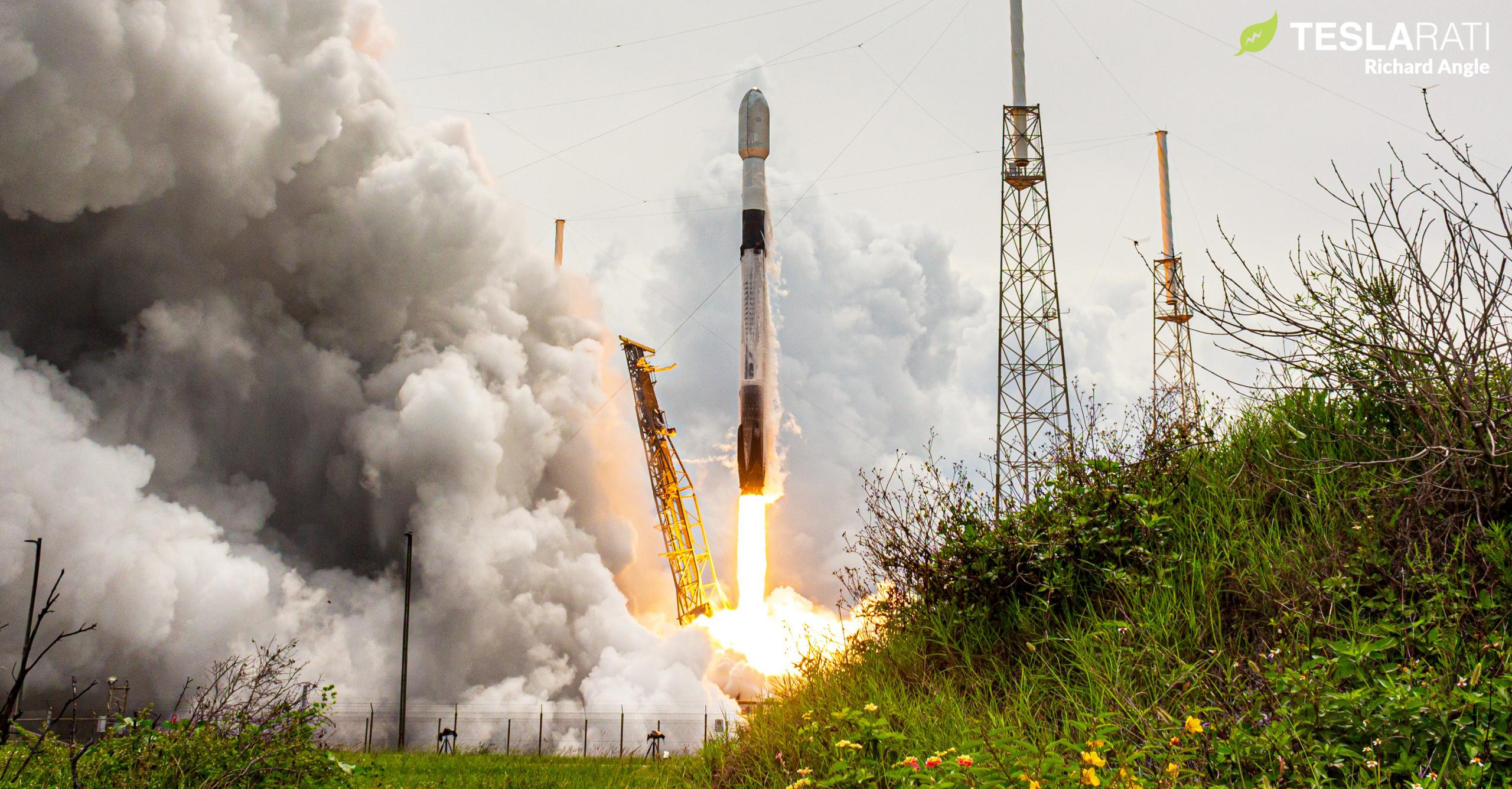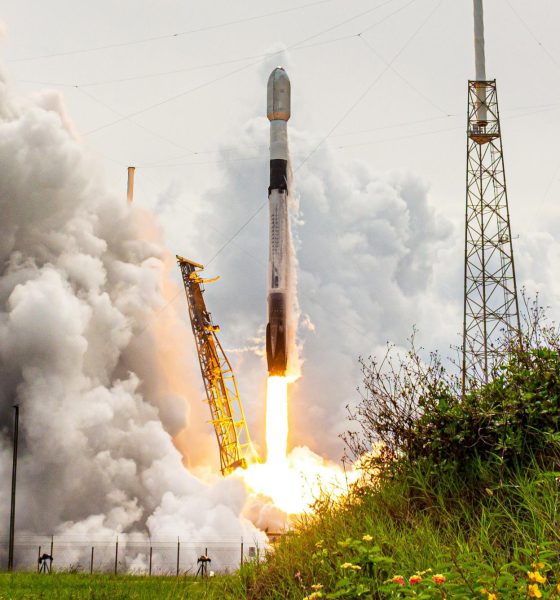

News
SpaceX’s Falcon 9 rocket is dominating global orbital launches in 2021
Less than five days after SpaceX completed its 20th successful Falcon 9 launch of 2021, a Long March 4C rocket lifted off with a meteorology satellite in tow, carry the country of China past its own same 20-flight milestone.
Excluding SpaceX and China, the rest of the world combined completed its 20th orbital launch hours before SpaceX when US startup Virgin Orbit’s LauncherOne rocket successfully flew for the second time. In simpler terms, relative to any other country, space agency, or company, SpaceX led the world in orbital launches for the first half of 2021 – the first time in history a single company has managed that feat.
Perhaps more importantly, as CEO Elon Musk has frequently noted over the last several months, total mass launched to orbit is an even more valuable measure of success and in that regard, SpaceX leads the rest of the world combined. In the first half of 2021, SpaceX has successfully launched more than 230 metric tons (~500,000 lb) of spacecraft, Dragons, space station cargo, and astronauts to orbit and grown its Starlink internet constellation by almost 800 satellites.
Falcon 9 is almost always at max capacity. When it has “spare” performance, it flies back to land, which costs much less than using a droneship.
Our fundamental constraint is mass to orbit per unit time. Last year, SpaceX launched roughly double payload mass of rest of world.— Elon Musk (@elonmusk) March 11, 2021
As of July 4th, the rest of the world combined – including China, Russia, India, and three other US providers – have launched approximately 175 tons (385,000 lb) to orbit in 2021. According to Musk, SpaceX effectively doubled the rest of the world’s payload mass to orbit in 2020, meaning that other launch providers – mostly led by China – are actually significantly more competitive in 2021, though they’ve still launched ~25% less mass than SpaceX.
As far as specific launch vehicles go, SpaceX also retains an almost unbeatable lead with Falcon 9. Only Russia comes vaguely close with 11 successful Soyuz 2.1 launches so far, followed by China’s Long March 4 with 8 flights this year.
Nevertheless, on July 1st, a Russian Soyuz 2.1 rocket launched OneWeb’s eighth batch of low Earth orbit (LEO) internet satellites, pushing the rest of the non-China/SpaceX world to 21 successful launches in 2021. China’s July 4th launch was its 20th successful orbital mission, tying SpaceX, but the country’s national space agency and at least one Chinese startup have plans for as many as seven more launches this month. Given China’s ambitious manifest and far greater resources, it’s possible that SpaceX won’t catch up before the end of 2021, but the lone company and its reusable Falcon 9 workhorse rocket are still on pace to launch 40 times (or more) this year alone.

News
Tesla FSD fleet is nearing 7 billion total miles, including 2.5 billion city miles
As can be seen on Tesla’s official FSD webpage, vehicles equipped with the system have now navigated over 6.99 billion miles.

Tesla’s Full Self-Driving (Supervised) fleet is closing in on almost 7 billion total miles driven, as per data posted by the company on its official FSD webpage.
These figures hint at the massive scale of data fueling Tesla’s rapid FSD improvements, which have been quite notable as of late.
FSD mileage milestones
As can be seen on Tesla’s official FSD webpage, vehicles equipped with the system have now navigated over 6.99 billion miles. Tesla owner and avid FSD tester Whole Mars Catalog also shared a screenshot indicating that from the nearly 7 billion miles traveled by the FSD fleet, more than 2.5 billion miles were driven inside cities.
City miles are particularly valuable for complex urban scenarios like unprotected turns, pedestrian interactions, and traffic lights. This is also the difference-maker for FSD, as only complex solutions, such as Waymo’s self-driving taxis, operate similarly on inner-city streets. And even then, incidents such as the San Francisco blackouts have proven challenging for sensor-rich vehicles like Waymos.
Tesla’s data edge
Tesla has a number of advantages in the autonomous vehicle sector, one of which is the size of its fleet and the number of vehicles training FSD on real-world roads. Tesla’s nearly 7 billion FSD miles then allow the company to roll out updates that make its vehicles behave like they are being driven by experienced drivers, even if they are operating on their own.
So notable are Tesla’s improvements to FSD that NVIDIA Director of Robotics Jim Fan, after experiencing FSD v14, noted that the system is the first AI that passes what he described as a “Physical Turing Test.”
“Despite knowing exactly how robot learning works, I still find it magical watching the steering wheel turn by itself. First it feels surreal, next it becomes routine. Then, like the smartphone, taking it away actively hurts. This is how humanity gets rewired and glued to god-like technologies,” Fan wrote in a post on X.
News
Tesla starts showing how FSD will change lives in Europe
Local officials tested the system on narrow country roads and were impressed by FSD’s smooth, human-like driving, with some calling the service a game-changer for everyday life in areas that are far from urban centers.

Tesla has launched Europe’s first public shuttle service using Full Self-Driving (Supervised) in the rural Eifelkreis Bitburg-Prüm region of Germany, demonstrating how the technology can restore independence and mobility for people who struggle with limited transport options.
Local officials tested the system on narrow country roads and were impressed by FSD’s smooth, human-like driving, with some calling the service a game-changer for everyday life in areas that are far from urban centers.
Officials see real impact on rural residents
Arzfeld Mayor Johannes Kuhl and District Administrator Andreas Kruppert personally tested the Tesla shuttle service. This allowed them to see just how well FSD navigated winding lanes and rural roads confidently. Kruppert said, “Autonomous driving sounds like science fiction to many, but we simply see here that it works totally well in rural regions too.” Kuhl, for his part, also noted that FSD “feels like a very experienced driver.”
The pilot complements the area’s “Citizen Bus” program, which provides on-demand rides for elderly residents who can no longer drive themselves. Tesla Europe shared a video of a demonstration of the service, highlighting how FSD gives people their freedom back, even in places where public transport is not as prevalent.
What the Ministry for Economic Affairs and Transport says
Rhineland-Palatinate’s Minister Daniela Schmitt supported the project, praising the collaboration that made this “first of its kind in Europe” possible. As per the ministry, the rural rollout for the service shows FSD’s potential beyond major cities, and it delivers tangible benefits like grocery runs, doctor visits, and social connections for isolated residents.
“Reliable and flexible mobility is especially vital in rural areas. With the launch of a shuttle service using self-driving vehicles (FSD supervised) by Tesla in the Eifelkreis Bitburg-Prüm, an innovative pilot project is now getting underway that complements local community bus services. It is the first project of its kind in Europe.
“The result is a real gain for rural mobility: greater accessibility, more flexibility and tangible benefits for everyday life. A strong signal for innovation, cooperation and future-oriented mobility beyond urban centers,” the ministry wrote in a LinkedIn post.
News
Tesla China quietly posts Robotaxi-related job listing
Tesla China is currently seeking a Low Voltage Electrical Engineer to work on circuit board design for the company’s autonomous vehicles.

Tesla has posted a new job listing in Shanghai explicitly tied to its Robotaxi program, fueling speculation that the company is preparing to launch its dedicated autonomous ride-hailing service in China.
As noted in the listing, Tesla China is currently seeking a Low Voltage Electrical Engineer to work on circuit board design for the company’s autonomous vehicles.
Robotaxi-specific role
The listing, which was shared on social media platform X by industry watcher @tslaming, suggested that Tesla China is looking to fill the role urgently. The job listing itself specifically mentions that the person hired for the role will be working on the Low Voltage Hardware team, which would design the circuit boards that would serve as the nervous system of the Robotaxi.
Key tasks for the role, as indicated in the job listing, include collaboration with PCB layout, firmware, mechanical, program management, and validation teams, among other responsibilities. The role is based in Shanghai.
China Robotaxi launch
China represents a massive potential market for robotaxis, with its dense urban centers and supportive policies in select cities. Tesla has limited permission to roll out FSD in the country, though despite this, its vehicles have been hailed as among the best in the market when it comes to autonomous features. So far, at least, it appears that China supports Tesla’s FSD and Robotaxi rollout.
This was hinted at in November, when Tesla brought the Cybercab to the 8th China International Import Expo (CIIE) in Shanghai, marking the first time that the autonomous two-seater was brought to the Asia-Pacific region. The vehicle, despite not having a release date in China, received a significant amount of interest among the event’s attendees.








